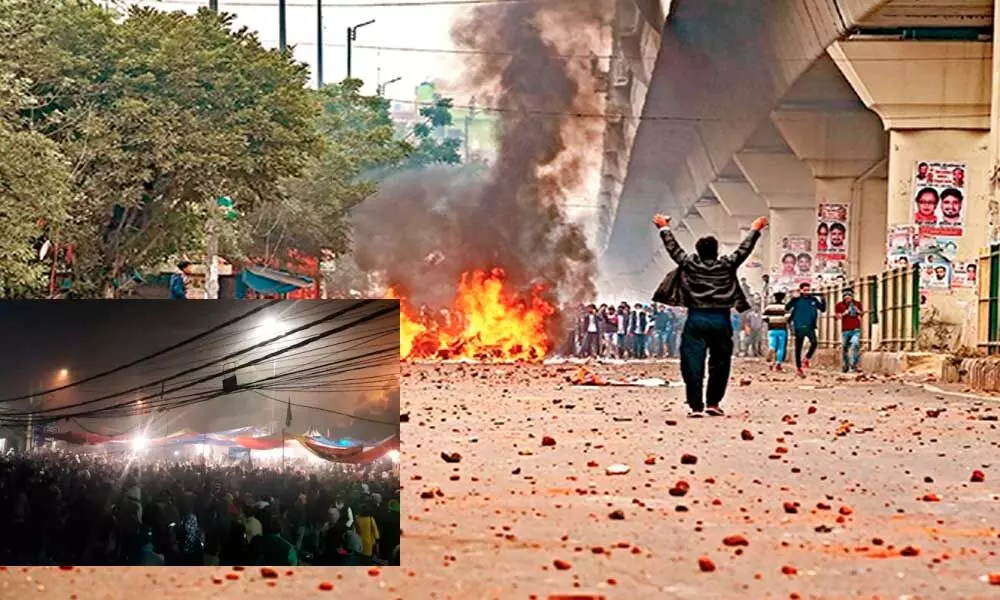People's movements symbolise people's power
Arab Spring and Shaheen Bagh sit-out emerge as two examples of popular and strong people movements in the recent history.
image for illustrative purpose

The past week marked the tenth and first anniversary of two different events, both starting off as a protest against the ruling regime and in turn snowballing into massive movements.
The first, the so-called 'Arab Spring' marked its tenth anniversary and the second, the Shaheen Bagh sit-out its first anniversary. Let's have a look how these two movements started and what did they achieve.
Arab Spring
Ten years back when a young street vendor named Mohamed Bouazizi in the Tunisian town of Sidi Bouzid set himself on fire on 17 December 2010, he started a revolution, which spread across his own country and later to most of the Middle Eastern countries.
Due to the protests Tunisia has transformed in many ways, it has held numerous elections. Form of government to strengthen the parliament has been affected; a new constitution that enshrines civil liberties and women's rights while limiting the power of the armed forces has been adopted.
The protestors had hoped for change, dawn of a new era of prosperity and freedom. But ten years later, that spectacular moment of joy and liberation has faded away to reveal a sober reality. A small country struggles to find its way despite economic stagnancy, persistent corruption and stark political and cultural polarisation.
The Western media viewed the Arab Spring and its results through its out-dated and flawed Orientalist prism.
Western media and scholarship have reduced the Tunisian revolution to a story of success or failure. And has done much to validate the tired trope that Arabs are not ready for democracy.
After affects
The ten years of the "Arab Spring" the last of which is the year of Covid-19 have brought many Arab countries to the edge of an abyss. The food shortage, the unending wars in Libya, Syria, Iraq and Yemen, the Iranian expansion and global apathy have worsened the distress of the Middle East.
However, the Arab Spring and the political movements spawned by it were rejection of decades of failed governments and aspiration for a democratic styled governance, in most countries. The uprising in Syria, for example, began as small regional protests calling for political reforms, not the downfall of the dictatorship. It was only after the initial calls were met with overwhelming violence that those calls eventually changed.
But other than geographic proximity and a shared history of living under dictatorship, the Oz Katerji, a British-Lebanese freelance journalist sums it up by saying that the Arab Spring may be over, but the civilian uprisings in the Middle East have barely begun. There is no way for dictatorships to turn the clock back to 2011, and there is no desire from their populations to accept a status quo that permanently disenfranchises them. The powder is drier than it has ever been; all that is missing now is the next spark.
Shaheen Bagh Sit-out
The Shaheen Bagh sit-out started very quietly on the night of 16 December 2019, when late at night four men and six women, with some children in tow, moved from the lanes of Shaheen Bagh, a Muslim ghetto in South Delhi, onto the main road connecting Delhi to the neighbouring state of Uttar Pradesh. They silently sat on the road, few hundred metres away from the spot where earlier in the evening the police had dispersed a crowd of youngsters protesting against the controversial Constitutional Amendment Act (CAA) and National Register of Citizens (NRC), violently. The location of the sit-out made it stronger as it affected the traffic between the capital city and its neighbouring state to a large extent, and the resultant chaos lent it more publicity.
From the night of 16 December onwards, these handful women were joined by hundreds of protesters, mostly women, both young and old. Their main grouse was the exclusion of Muslims from the controversial Constitutional Amendment Act (CAA) and the plethora of complexities which will be thrust on the shoulders of Muslims to prove their identity, as and when the NRC-NPR are rolled out in the country, besides raising their voice against the barbaric police action on students of Jamia and AMU, and in several other cities of UP, days before.
Providentially the women protesters at Shaheen Bagh proved to take upon the qualities of the bird on which their locality had also been named. They proved that they were visionary, resolved, determined and tenacious like the free bird. And were ready to take on the might of an unresponsive establishment through their silent protest.

